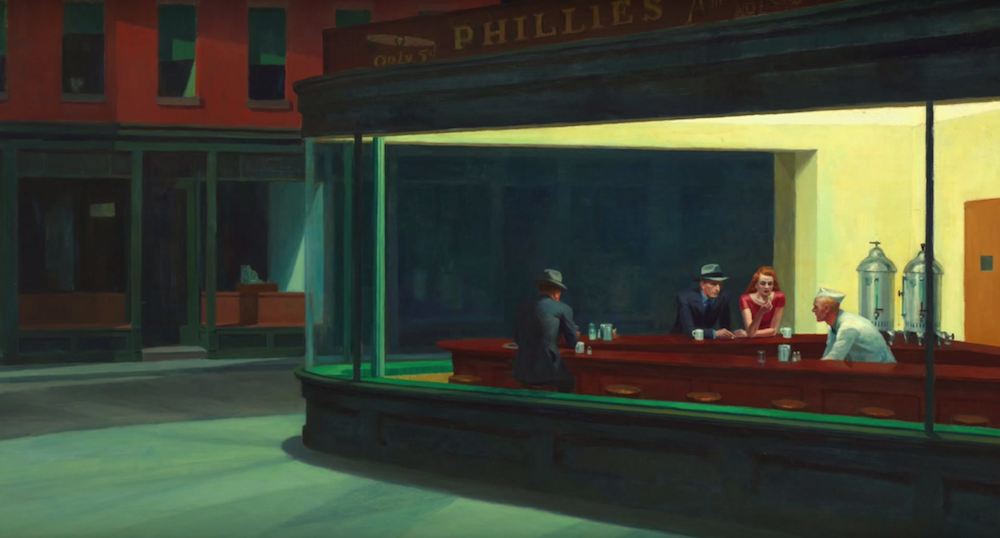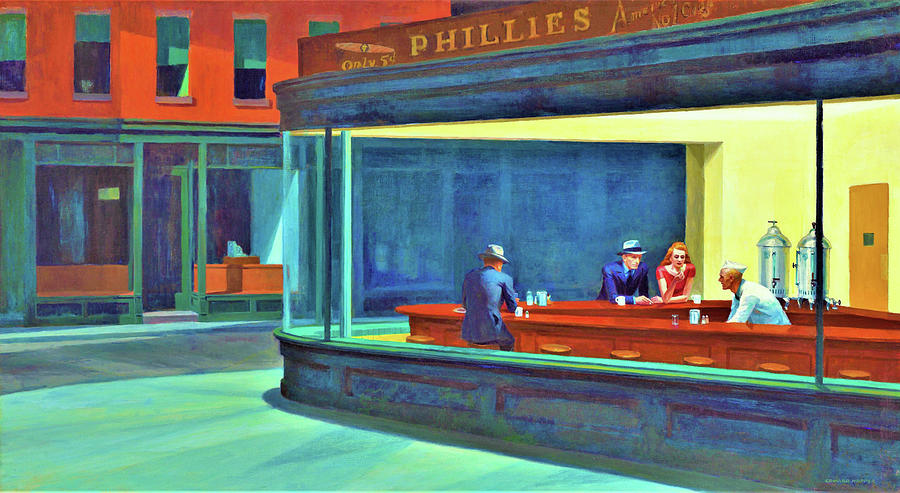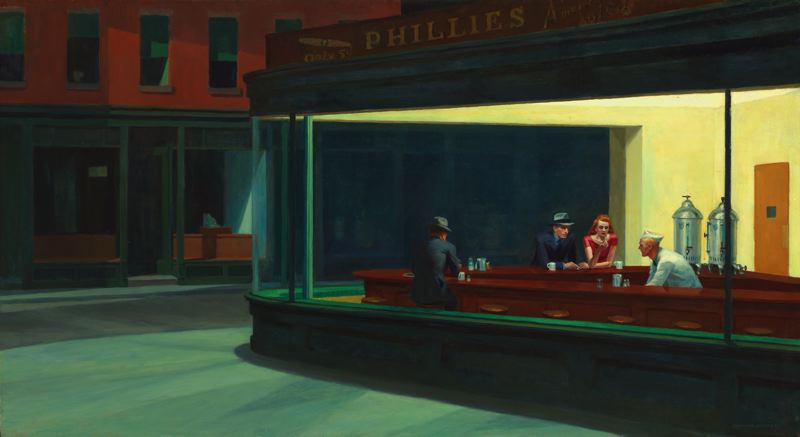
Painted more than a decade later, Hopper’s most acclaimed composition, Nighthawks (1942), also references his neighborhood, not far from the Whitney’s present-day site in downtown Manhattan. The Seventh Avenue building on which the painting was based was a short walk from Hopper’s studio on Washington Square.

His masterpiece Early Sunday Morning (1930), acquired just a few months after it was finished, would become part of the Museum’s founding collection. Hopper’s earliest exhibitions were held at the Whitney Studio Club, and his ties to the Whitney Museum of American Art deepened over the course of his career. At a moment when many artists in New York had turned to abstraction, Hopper pushed his compositions further than ever before in his charged images of cafeterias, theaters, offices, and apartment bedrooms. These works were inspired by precise locations but depart from specific references to morph into ambiguous spaces of mystery, anticipation, and anxiety. The Hoppers’ collaborative scene staging was integral to Edward’s painting process.Ĭafeterias, theaters, offices, and apartment bedroomsįrom the mid-1940s to the 1960s, Hopper produced a group of ambitious paintings characterized by radically simplified geometry and uncanny, dreamlike settings. A number of Hopper’s preparatory studies for paintings depict Jo, who played an active role as his sole model, for which she often dressed in character and helped source props.

Together, the Hoppers traveled to Cape Cod and took road trips throughout the United States and Mexico. After his marriage in 1924 to the artist Josephine (Jo) Verstille Nivison, he continued to decamp in the warmer months. The works he made there reflect his close observation of the natural environment. While some of his compositions were based on specific sites, most of his paintings were based on a synthesis of elements from disparate locations, creating an imagined whole.ĭuring this period, Hopper spent his summers visiting coastal towns in Maine and Massachusetts. He described his on-site sketching process as working “from the fact,” an effort to collect details directly from the world around him. Throughout his career, Hopper explored the city with a sketchbook in hand, recording his observations through drawing. In his prints and mature paintings, he exploited its potential to merge the urban facades that had long fascinated him with views into the private lives lived within.

The window became one of Hopper’s most enduring symbols. From 1915 to the early 1920s, he forged a rigorous printmaking practice, consolidating many of his impressions of the city and sharpening his compositional skills to experiment with light and shadow in black and white.
Nighthawks by edward hopper how to#
During these trips, Hopper sketched and painted outdoors, creating luminous, loosely rendered cityscapes that helped him develop a sense of how to frame the built environment around him.īack in New York, Hopper established his career as a chronicler of the modern urban experience. Funded by his commercial assignments, Hopper traveled to Paris for three extended visits between 19. Afterward, he began pursuing freelance illustration work while continuing to paint.

As a young artist in 1899, Hopper began commuting into the city from his hometown of Nyack-less than thirty miles north of Manhattan-to study at the New York School of Illustrating and then, one year later, at the New York School of Art.


 0 kommentar(er)
0 kommentar(er)
